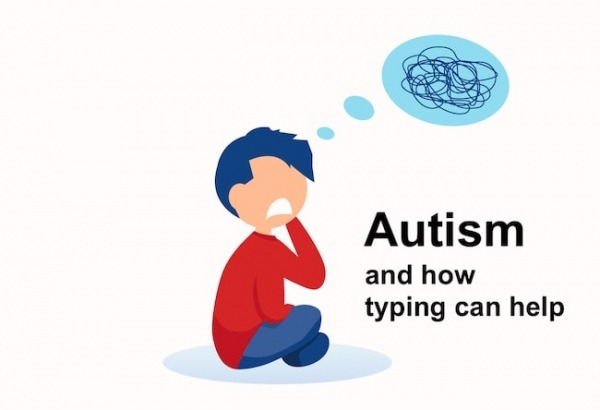16 Teaching strategies to help EALs in the classroom

It can be difficult to know the best way to help English as an additional language (EAL) learners in the classroom. That’s because they are a diverse group and designated language tutors can’t always be in a lesson to help out.
EALs will inevitably experience comprehension and communication difficulties that can get in the way of learning. But that doesn't mean they always need over-simplified vocabulary worksheets.
Teachers of EALs who approach the challenge in different ways, by making classroom activities more EAL friendly, teaching strategies English learners can implement independently, making use of technology, and paring native-speaker and English language learners up to encourage scaffolding, can turn any lesson into a successful learning experience for everyone involved, even the teacher!
EALs may appear to be slower than other learners, less engaged and/or less present in the classroom. But this is often due to language difficulties and has nothing to do with a student’s intelligence. Remember that English language learners are working twice as hard to master both the subject of a lesson and the language used to describe it.
This is not only challenging but can be cognitively overloading and result in feelings of frustration and low self-esteem.
Yet bilingual individuals are extremely dynamic thinkers. They are often very creative and may even be more cognitively advanced than their monolingual peers, as their brains can consider the same problem in different ways.
It just takes some time for language ability to develop.
Know your learners
While English as an additional language learners are typically given a diagnostic test to assess their level of spoken and written language before they enter your classroom, tests don’t always provide teachers with the full picture.
That’s because an exam is a snapshot in time that shows performance, not language knowledge. As someone learning a language begins to recognize patterns and acquire rules, such as adding –ed to past-tense verbs - they must travel through a U Shaped Curve on their Inter-language Continuum.
If an exam catches someone at the bottom of the U, when the learner has noticed there is a pattern but not yet begun to apply the rule correctly or recognize exceptions, they make mistakes. For example, with irregular past tense verbs.
But by assessing multiple examples of a student’s written work or sitting down with them for a few brief chats, teachers can come away with a much better idea of language ability, strengths and deficits in reading, writing, speaking and listening.

Classroom Strategies
A great place for teachers to start is by making classroom lessons more EAL friendly and ensuring the language input students receive is accessible.
Give Written and Spoken Instructions
For EALs whose first language alphabet is different from English, making their way through dense English text can be an off-putting and discouraging activity. This is why it helps if teachers include images when possible and go over an activity verbally beforehand, to highlight the key information it contains.
On the other hand, listening can be quite intimidating for learners who are not yet comfortable parsing English speech, haven’t adjusted to the local accent or are still struggling to hear the phonemes that distinguish certain words.
In these instances, it’s best to have a written copy of classroom notes or task instructions. Teaching language in both written and spoken form is also useful for teachers who have students with learning difficulties in the classroom, such as dyspraxia or dyslexia.
Introduce Vocabulary in Context
It can be tempting to hand an English language learner a list of words and ask them to learn the terms in advance of a lesson. While this form of direct learning may work for some students, vocabulary acquisition is more likely if a new word is encountered multiple times in the context of your lesson.
That’s because the lesson itself will help EALs take a guess at the meaning and spending that extra bit of cognitive energy thinking about a term will cement it in memory. Context also provides hints about form, meaning and use that aren’t available in an isolated list.
Offer an Extended Glossary
Even native-speaker children sometimes need a glossary of new vocabulary alongside a reading, to help them make meaning without the distraction of looking up words in the dictionary. If teachers offer a larger than average glossary, it can both reinforce word meaning for native-speaker learners and greatly help the EALs, who may otherwise struggle with comprehension.
Teach Sight Words
Did you know that 50-75% of all of the words in elementary school materials come from the Dolch list? These tend to be function words including prepositions, articles and verbs. Learning to recognize these words without having to decode them is advantageous for all learners, regardless of language background.
This is because English spelling can be rather irregular and mapping sounds to letters, in order to sound out new words, is a demanding task for a new reader. Teaching Sight Words to EALs will help them conserve cognitive resources for decoding the harder, less frequent words they are bound to encounter.
Be Patient
People say children are sponges when it comes to language, but this isn’t exactly the case. Native speakers’ children are exposed to thousands of examples of English vocabulary before they begin speaking, and on top of that they have one or two personal tutors to teach them - their parents!
EALs may only spend a few hours in your class a week and they may get varying amounts of English outside of the classroom and at home. You can introduce them to vocabulary but also recognize that it may take some time for words to show up in their written work. Receptive knowledge is gained through repeat exposure to words in context and usually this precedes productive knowledge.

Strategies for English as an additional language learners
Teaching strategies can help students expand their vocabulary and improve reading and writing skills both in and outside the classroom. Keep in mind that language abilities may be keeping an EAL back, but it’s also sometimes the case that students are struggling with an undiagnosed learning difficulty.
Dyslexia, dyspraxia, and even physical or sensory impairments can greatly complicate classroom learning, as these students may need strategies for English as well as for working around their learning difficulty.
Vocabulary
In general, a student needs to be familiar with 90% of the words involved in a task in order to understand it. The difficulty in teaching EALs alongside native-speaker learners is that often there is a rather large deficit in the size of their vocabulary.
The good thing is, the more words they learn, the more content EALs can access and in turn the greater their vocabulary will be. So how can teachers help them get started? By teaching vocabulary acquisition strategies.
- Dictionary Use
Learners should always have a dictionary handy, whether it is a tried and true paper copy or an electronic version offered by an app. The advantage to the latter is that it can provide an audio recording of the word, which is helpful for sound letter mapping and reinforcing phonics. Teachers might put together a list of dictionary apps or purchase several paper copies to keep in the classroom. Teaching students how to use a dictionary and understand the part of speech data it provides is also useful.
- Mnemonic Devices
When words are difficult to remember, teachers can suggest students think of a word in their first language that sounds the same as the English word. Next, show them how to create an anecdote or mental image that connects the meaning of the target word to the native language word. This may be a slow way to learn vocabulary, but it is helpful for beginners and EALs who are struggling with particularly difficult terms.
- Guessing from Context
Some EALs may be quick to reach for the dictionary. It’s often worth taking a few seconds to guess at what a new word might mean using clues provided by the context of the sentence. When teachers model this first, it can help students learn how to do it more efficiently. More often than not, guesses will be correct, and if they’re not, students can always verify the meaning by looking words up in the dictionary. Plus, all of this extra attention spent on a word will make it less likely to be forgotten.
- Flashcards and SRS Review
There’s no point in looking up language if you don’t have a helpful way of ensuring new words make it into long-term memory. Teachers can show their students how to make flashcards that contain images and definitions in both the native and target language. These days there are even electronic flashcard apps that use a student’s individual forgetting curve to create a review schedule that ensures words are learned in the most efficient and effective way.
- Write or Type Words or Phrases
Repeat them several times, and say the words out loud as you go. Multi-sensory learning is an effective strategy for everyone.
Reading
Literacy skills are crucial across the academic curriculum and given reading is the fastest way to expand vocabulary, it’s important that teachers equip EALs with the language strategies they need to become strong readers.
- Pre-reading Activities
Just as is the case for native-speaker learners, it helps to know something about the material to be read before you begin. This is because students rely on prior-knowledge about a topic to help them make meaning from a text. Brainstorming phrases that apply to a related image, doing a crossword that uses keywords from the upcoming text, or simply having a conversation about the topic will help EALs activate the concepts and language they’ll need. When they’re on their own, teach students to look for clues as to what the reading will be about, such as analysing an article’s headline or considering text-type.
- Skimming & Scanning
Skimming is one of the most important top-down reading strategies because it helps EALs get a sense of the gist of a text, which in turn activates prior knowledge and makes a second and closer reading more fruitful. Teachers can show learners how to skim by running their finger along each line and looking for related vocabulary. Scanning is one of the most useful bottom-up strategies in which learners start from a smaller unit of meaning, in this case the word, phrase or sentence level. Scanning involves looking for a particular idea or word in a text. This is helpful for EALs who are trying to answer a question on an activity sheet or locate a piece of information in a paragraph. Highlighters may help as well.
- Graded Readers
If a text contains too many unfamiliar words, it will be cognitively overloading to process the language and can result in frustration with the task. Even worse, over time it leads to negative associations with reading. To avoid this, teachers might consider providing EALs with graded reader versions of English literature classics, to help them follow along with classroom discussion and enhance their reading skills at the same time.
Writing
Writing strategies need to be taught regardless of a learner’s language background. For EALs, written work can be particularly challenging as they not only struggle with getting ideas down on paper but may be hampered by grammar, finding the correct spelling of English words and the mechanics of producing letters.
- Mind-Maps of Ideas
A blank page is intimidating for even the most advanced student, but it’s a lot easier to get started if you know what you want to say. That’s why it’s helpful to teach EALs strategies like brainstorming ideas via a mind-map that relates to the topic, either in their first language or in English. The reason you may allow the native language to be used is it is more likely to generate personal events that the learner experienced before moving to an English speaking country.
- Ignoring Grammar, Spelling & Punctuation
If you are struggling to conjugate verbs, figure out how to spell physics, and differentiate between there and they’re, you may be too distracted to actually compose a coherent piece of writing. EALs should learn to write a first draft without worrying about errors, as they can always take multiple proof-reading passes after they’ve finished expressing their ideas.
- Using Spell-check and Grammar Tools
You may think teaching English language learners to use spell-check and grammar tools as writing strategies is cheating, but EALs can actually learn a lot from this kind of automated feedback. It’s also a great way for them to get the scaffolding they need when there are no teachers or native-speakers available to answer questions.
- Teaching Typing
EALs can benefit from a typing course as being able to touch-type can help them write more fluently and boost literacy skills at the same time. If the course takes a whole word approach (vs. nonsense key combinations) and includes a dictionary look-up function, it can also improve their English vocabulary.

Touch-type Read and Spell
A multi-sensory typing course like TTRS reinforces phonics by playing a sound, displaying the corresponding letter or word on screen and having learners type the correct key/keys. It begins at the letter level, which is particularly important for students whose mother tongue uses a different alphabet, or those who struggle to hear English sounds, but soon moves to a whole word approach.
Repeating modules and typing activities over and over again will help learners improve their spelling skills and enhance reading comprehension by familiarizing them with sight words. It can also lead to improvements in writing as electronic writing is much easier to re-organize and work with in-draft revisions with a tutor or peer-reviewer.
Moreover, completing modules in a typing course and receiving feedback and praise along the way can be a confidence booster for learners, something to cancel out all of the red-pen students are used to seeing on language related tasks.
Collaborative learning with English students
Vygostky’s Sociocultural theory holds that learning is intrinsically social. We are able to learn through interacting with others who are more advanced than us and can provide the help we need to move beyond our current level.
Can you think of a more perfect situation for EALs than learning alongside their English native-speaker peers? The trick is, learning only takes place when material falls within students’ Zone of Proximal Development, or ZPD for short. For this reason, having students work together on tasks that are too advanced can result in disaster.
The best lessons for group work are the ones that focus on material that is i+1, which is to say just one step beyond the EAL's level in English.
How do teachers determine if material falls in a student’s ZPD? Vocabulary. Whether you are working with English students or EALs, vocabulary is key when it comes to accessing a text and working through a task.
Ask students to read several sentences from the task they are about to perform and lift one finger up every time they meet an unknown word. If at the end all five fingers are raised, it might be more appropriate for them to work on the assignment with a designated tutor for EALs.
For teachers
TTRS is a program designed to support educators in teaching students touch-typing, with additional emphasis on reading and spelling.
Chris Freeman
TTRS has a solution for you
An award-winning, multi-sensory course that teaches typing, reading and spelling

How does TTRS work?
Developed in line with language and education research
Teaches typing using a multi-sensory approach
The course is modular in design and easy to navigate
Includes school and personal interest subjects
Positive feedback and positive reinforcement
Reporting features help you monitor usage and progress













